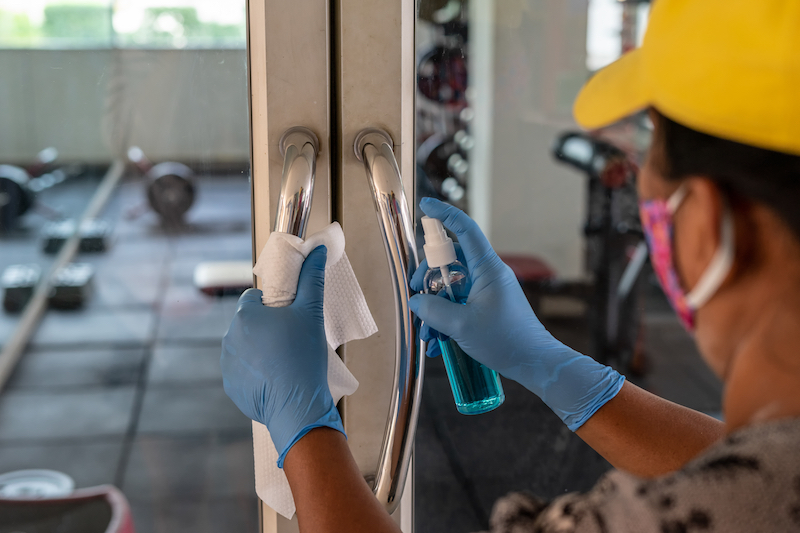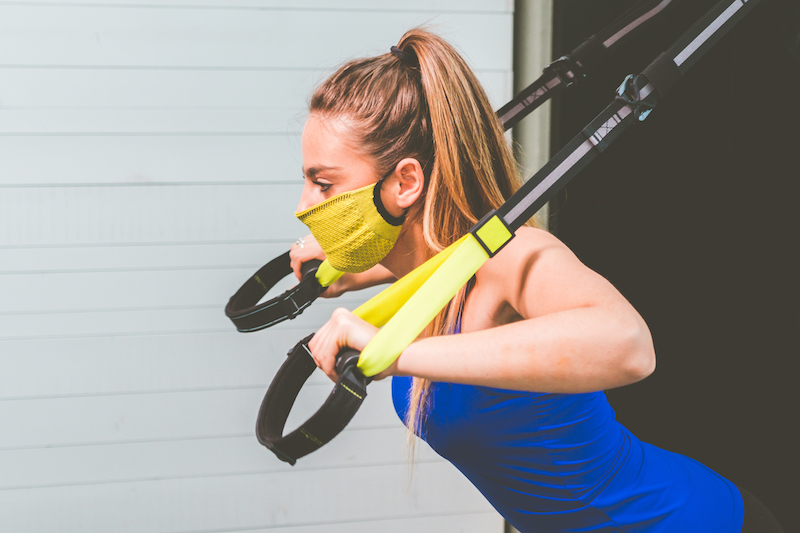A new article published in The German Journal of Sports Medicine has taken an exhaustive look at how to go about exercising during the pandemic. Titled “Sport, Exercise and COVID-19, the Disease Caused by the SARS-CoV-2 Coronavirus,” the paper can be accessed in its entirety for free, right here.
The Cliff notes, you ask? It addresses five questions with regard to COVD-19 and sport and exercise:
1) how SARS-CoV-2 targets ACE2-expressing human cells via its spike protein
2) the COVID-19 disease caused by it
3) the COVID-19 pandemic and attempts to control it
4) how the immune system responds to SARS-CoV-2 and how the immune system is affected by exercise training
5) advice for exercise during the pandemic for healthy adults, athletes and elderly, and possible control measures to help to return to normal sport and exercise at the end of the pandemic before herd immunity or mass vaccination has been achieved.
The last section of the paper is what we’re focusing on here, which is entitled “How should we exercise during the COVID-19 pandemic and how can we return safely to normal exercise and sport after the peak of the pandemic?”
Here are the points we found especially relevant.

Keep walking, by God
“Reductions in daily step count from 10,000 to below 1,500 reduced insulin sensitivity in adults, while the consequence of fewer than 2.000 steps was a loss of 2.8% of muscle mass within 2 weeks.”
It’s recommended to get a fitness tracker or tracking app to keep you on task.
Excessive exercise might not be great for immunity
The interplay between exercise and immunity is complex, but basically, regular exercise boosts immunity. However, given it’s a form of stress, excessive exercise might hamper immunity. To that end,
“We recommend that athletes do not train exceptionally hard whilst the COVID-19 pandemic is ongoing to avoid compromising immunity.”
The elderly are extra at risk of accelerating musculoskeletal ageing through inactivity, so they should keep up with “resistance, strength and balancing exercises.” (As we all should.)
Streaming services get a thumbs up no matter what your age is. (Here are our favorites.)

Recommendations for gym managers
Once they’re allowed to open, here are some tips (emphasis ours):
(Use) a neutral detergent for surfaces, virucidal disinfectants for toilets and personal protective equipment such as uniform and gloves for cleaning personnel.
If clients share equipment such as dumbbells, barbells or ergometers, then these should be disinfected after every user to avoid transmission by SARS-CoV-2 contaminated surfaces.
[Related: Returning to the Gym: Changes CrossFit Athletes Should Expect]
Do masks work for workouts?
The paper makes a distinction between high and low intensity exercise with regard to the effectiveness of masks, and recommends limiting high intensity workouts.
Exercise facilities should also limit exercise types, enforce social distancing and consider mandatory face masks.
Ventilation can increase from 5 l/min to more than 100 l/min during maximal exercise. For this reason it seems likely that an asymptomatic, infectious individual will spread SARS-CoV-2 to a greater degree during high intensity exercise than at rest.
If there is still some COVID-19 community transmission in an area, exercise providers should therefore consider limiting indoor exercise to low-intensity activities such as yoga, resistance training and low-intensity aerobic training whilst avoiding high intensity exercise classes such as spinning or exercise to music.
All exercise spaces should be well ventilated as poor ventilation is a risk factor for infections and aerosol may persist for longer if the ventilation is poor.

Without face masks, in 30% of droplet samples and 40% of aerosol samples coronavirus RNA was detectable, whereas it was undetectable in samples taken from patients wearing surgical masks.
As a consequence of increased breathing during exercise it is expected that face masks absorb an increased amount of moisture, and lose their protective effect after 10-15 min.
This would restrict the period for a protective effect and more than one mask should be available during training activities. However, face masks may also induce a false sense of security if they are incorrectly fitted, not renewed frequently enough, or if any virus caught within the mask is transferred to the person’s hands during removal.
Wrapping Up
While, as always, this one article isn’t definitive, it does cite ninety different studies to support its assertions. It looks like gym owners and users will have a new world to navigate once they open up again, with our main takeaway being that the rules of preventing the spread of COVID in the streets may not apply the same way at the gym.
Editor’s note: The content on BarBend is meant to be informative in nature, but it shouldn’t take the place of advice and/or supervision from a medical professional. The opinions and articles on this site are not intended for use as diagnosis, prevention, and/or treatment of health problems. Speak with your physician if you have any concerns.
Featured image via Damiano Buffo/Shutterstock